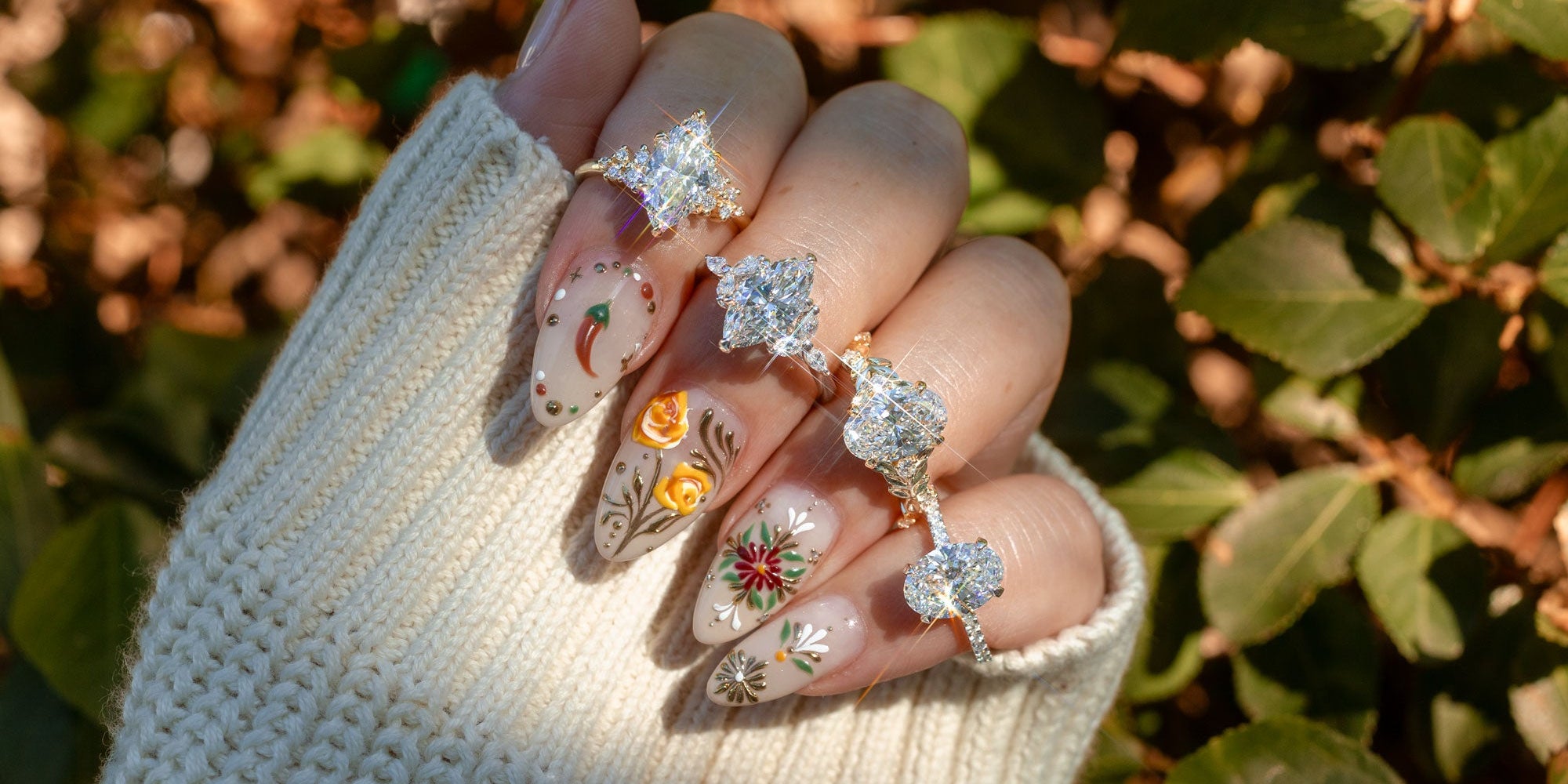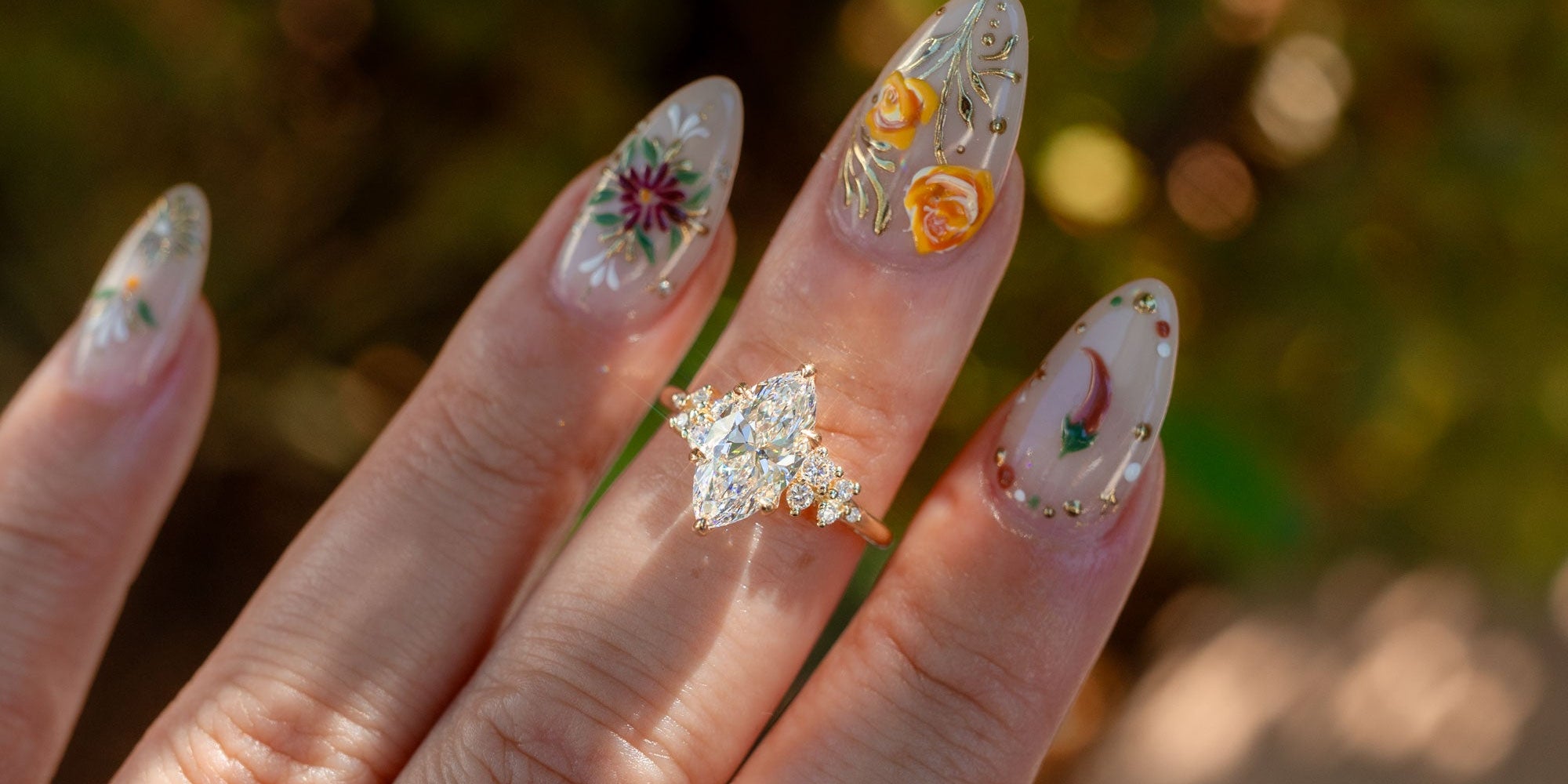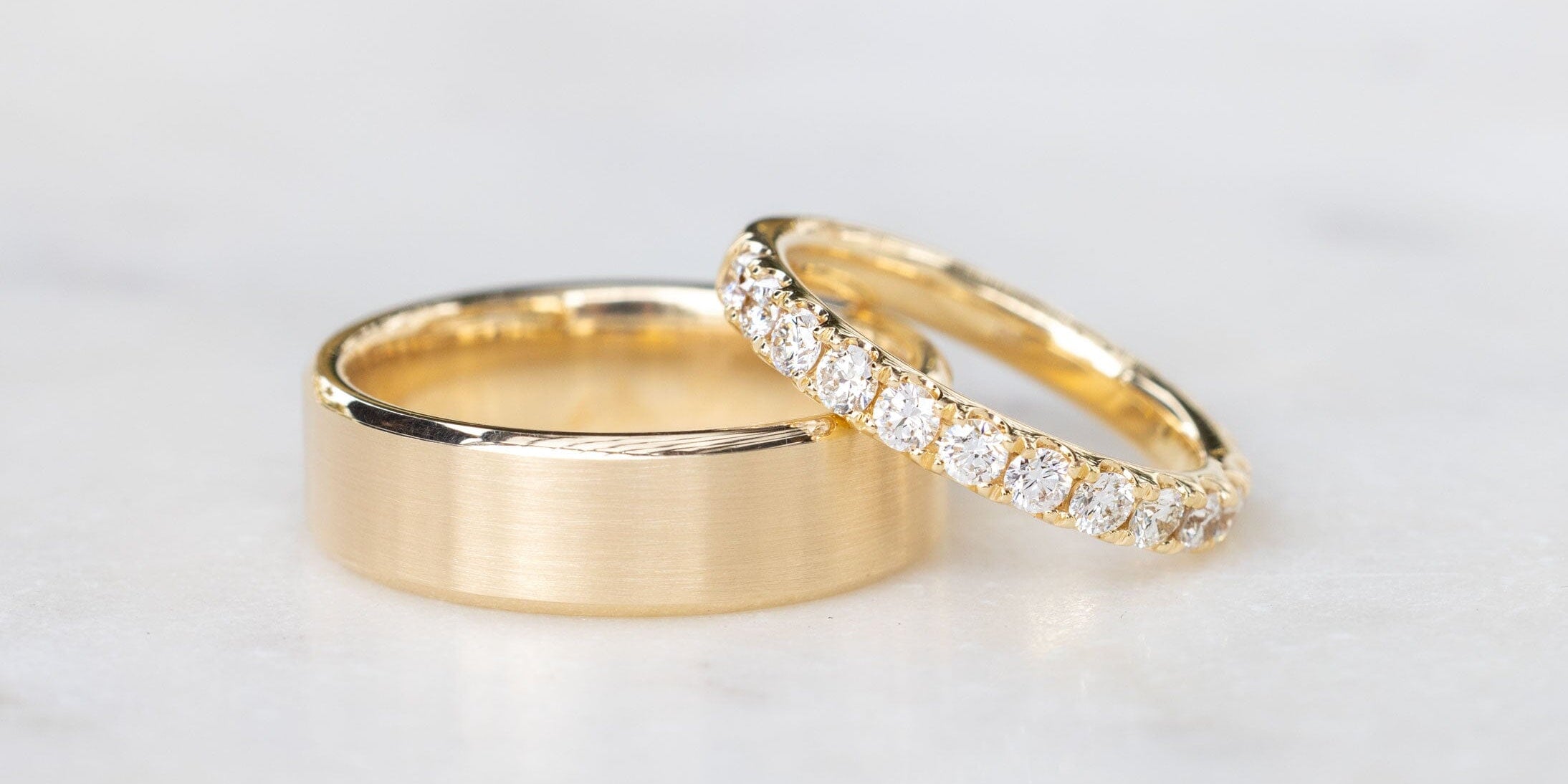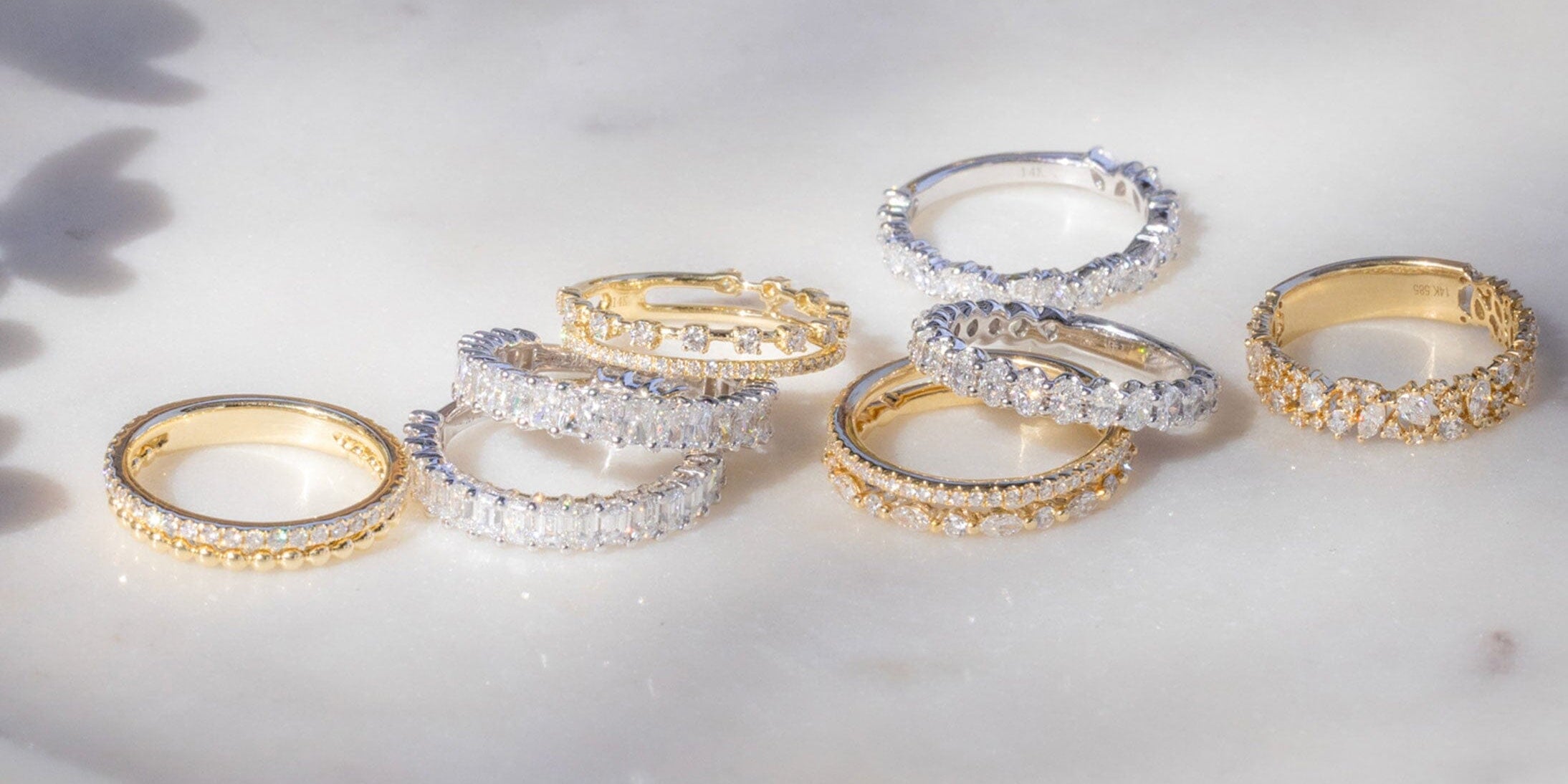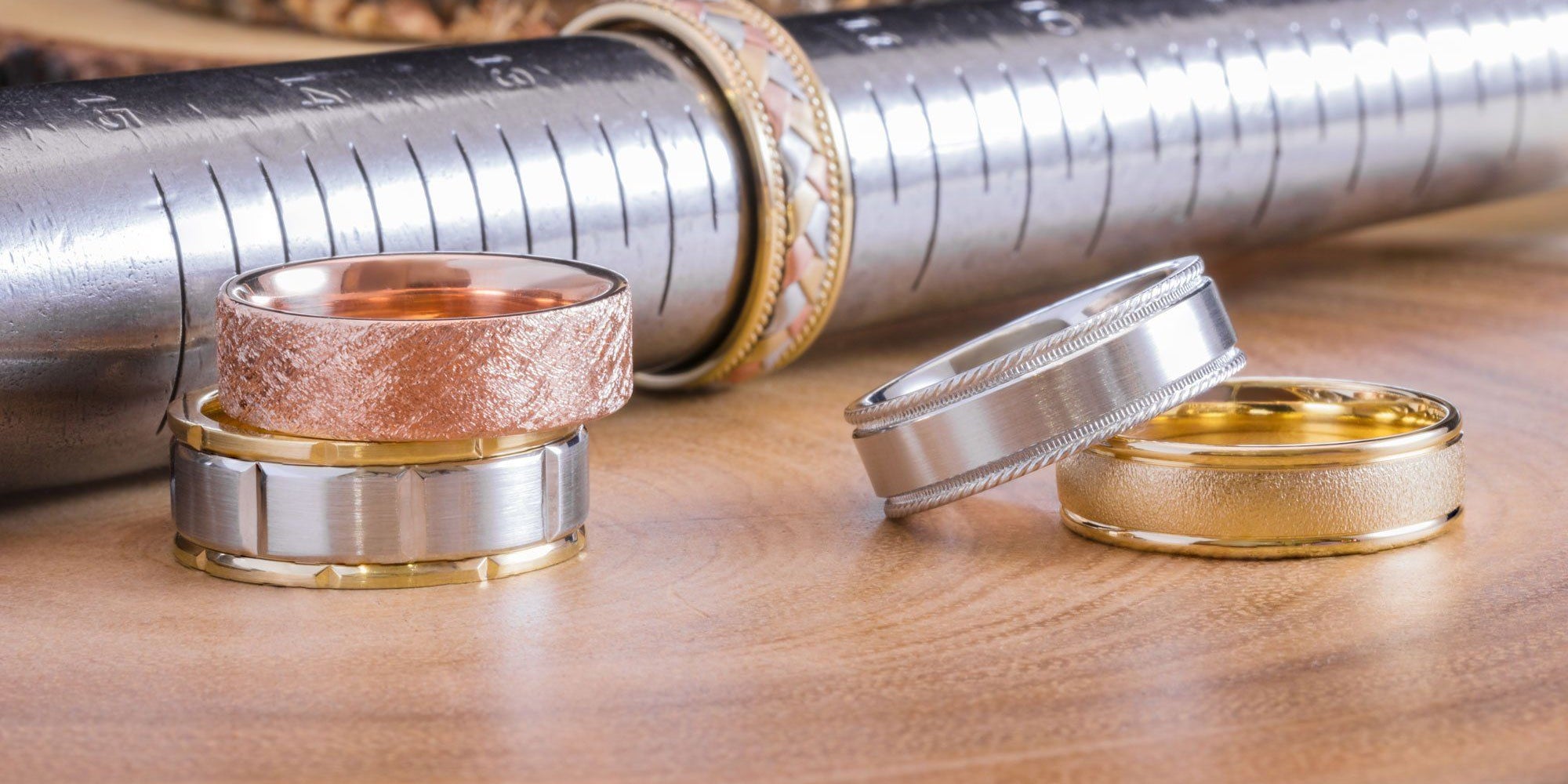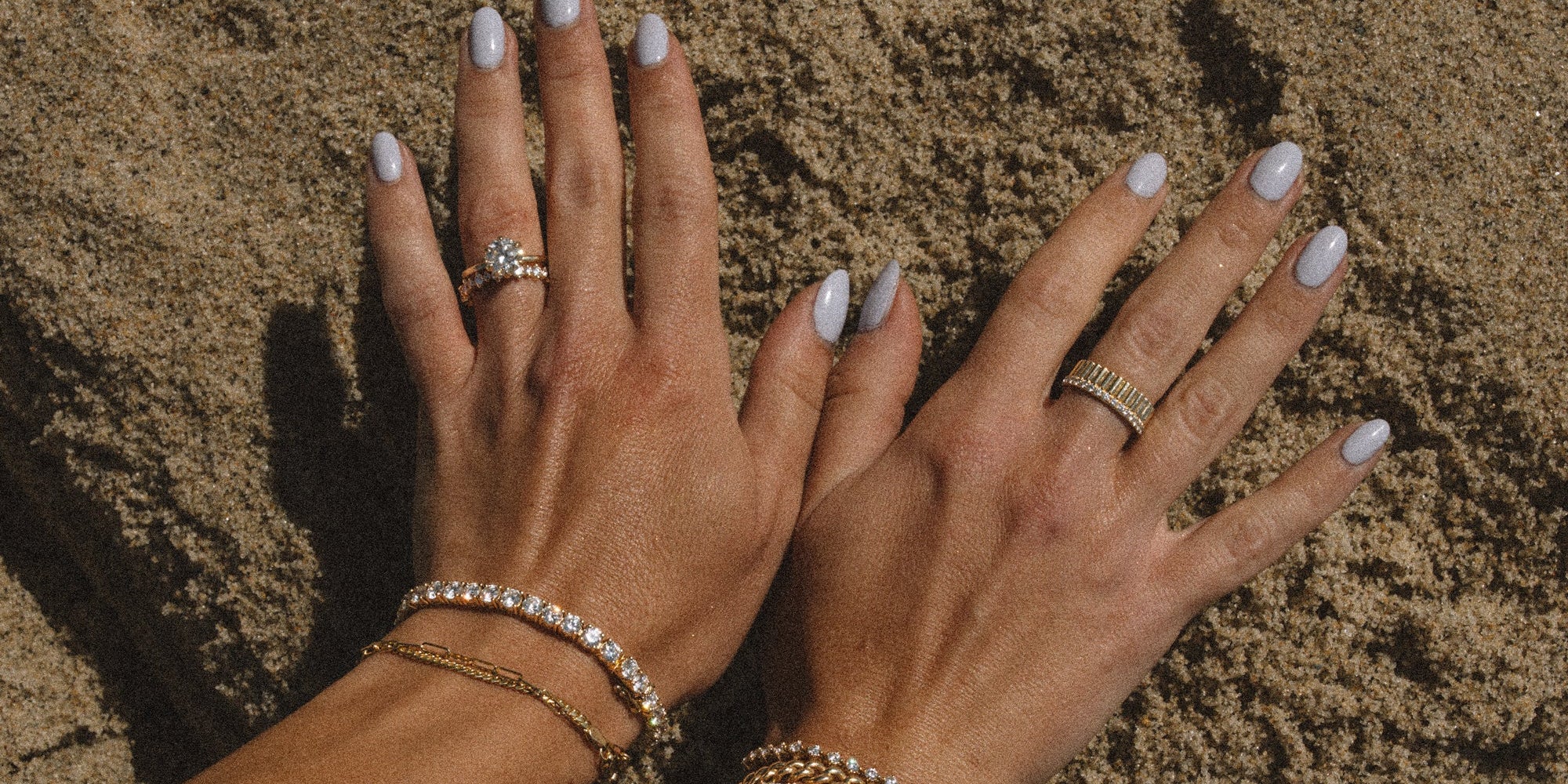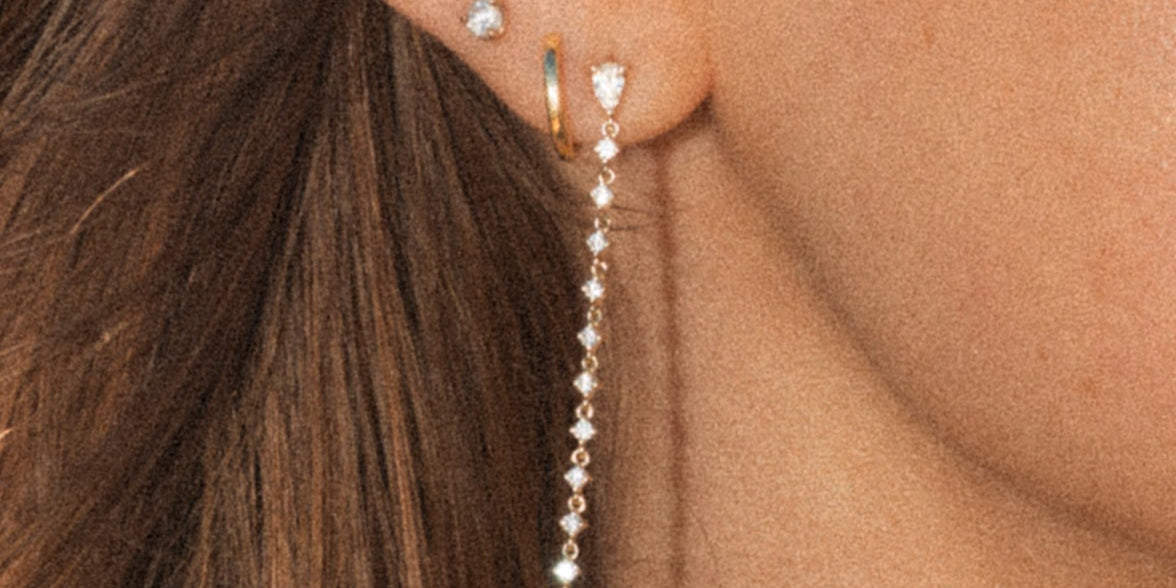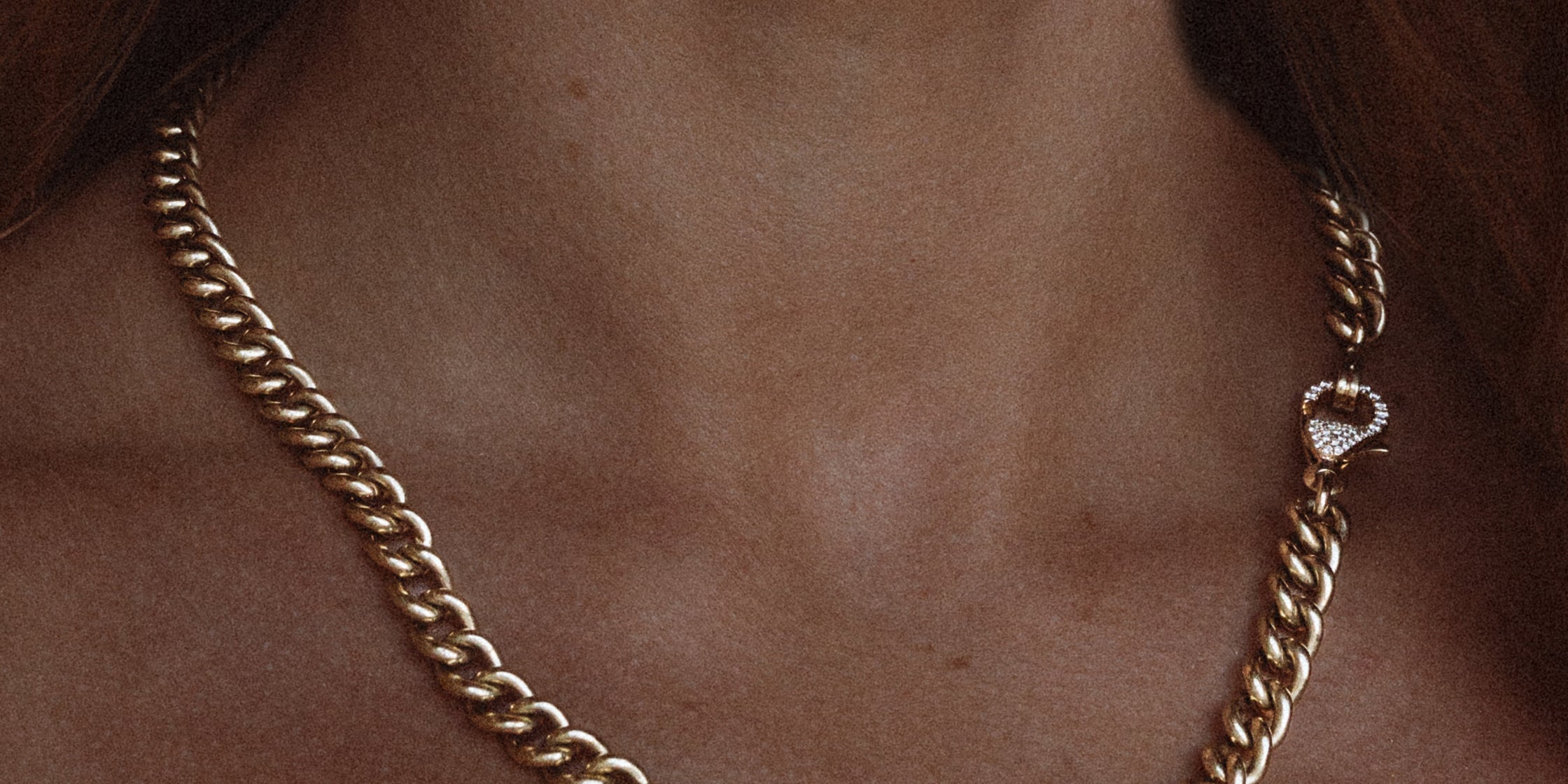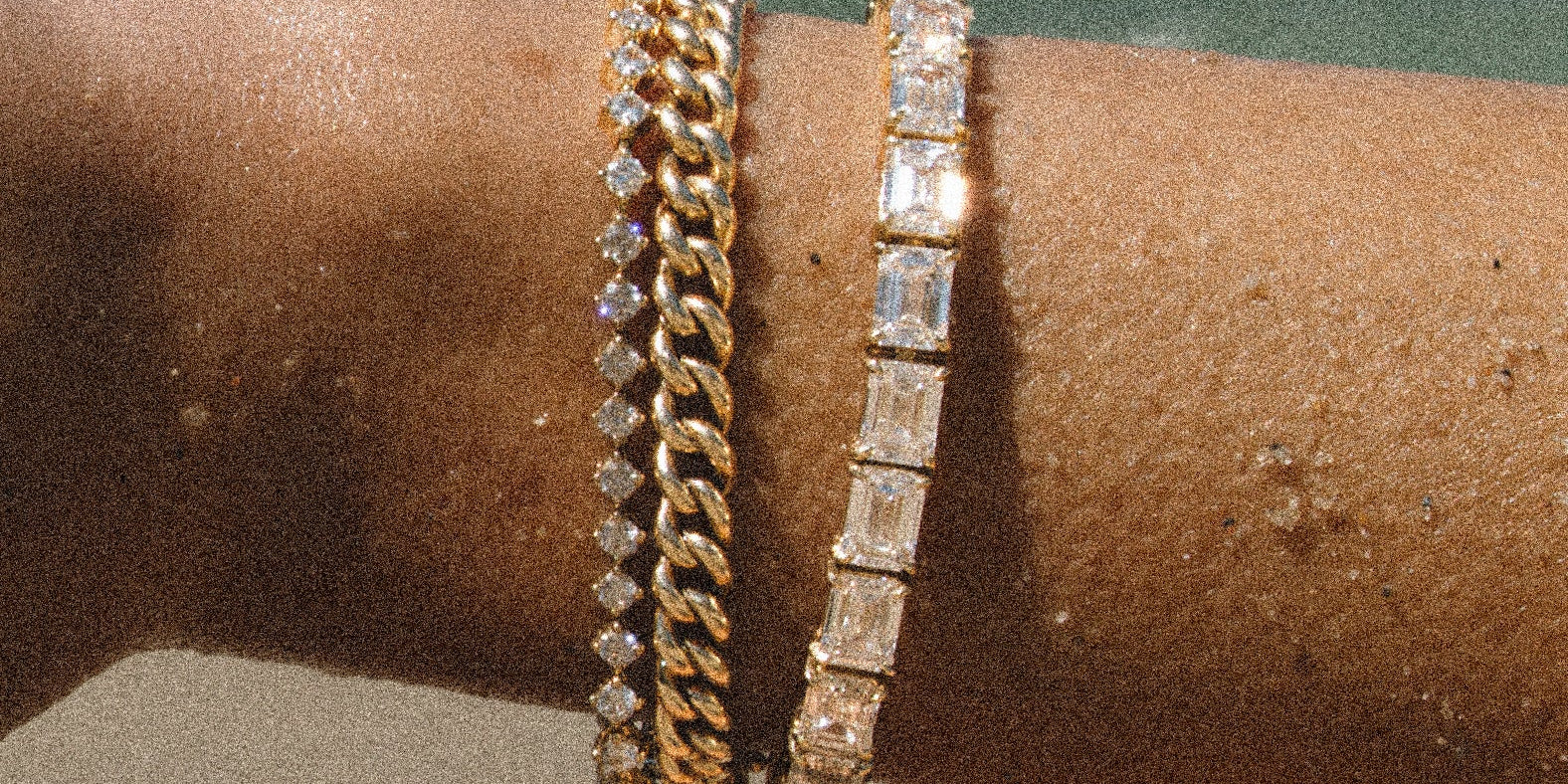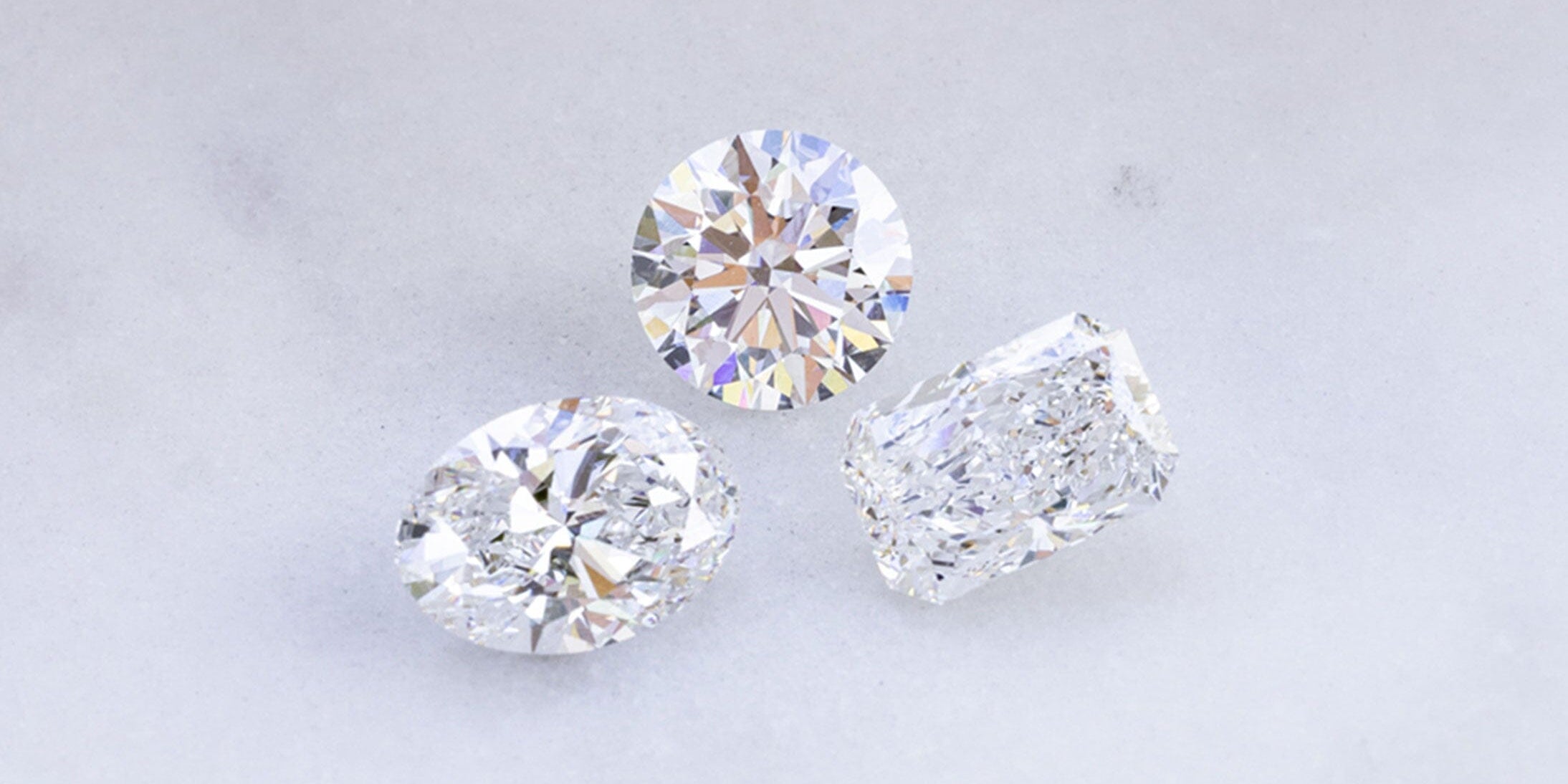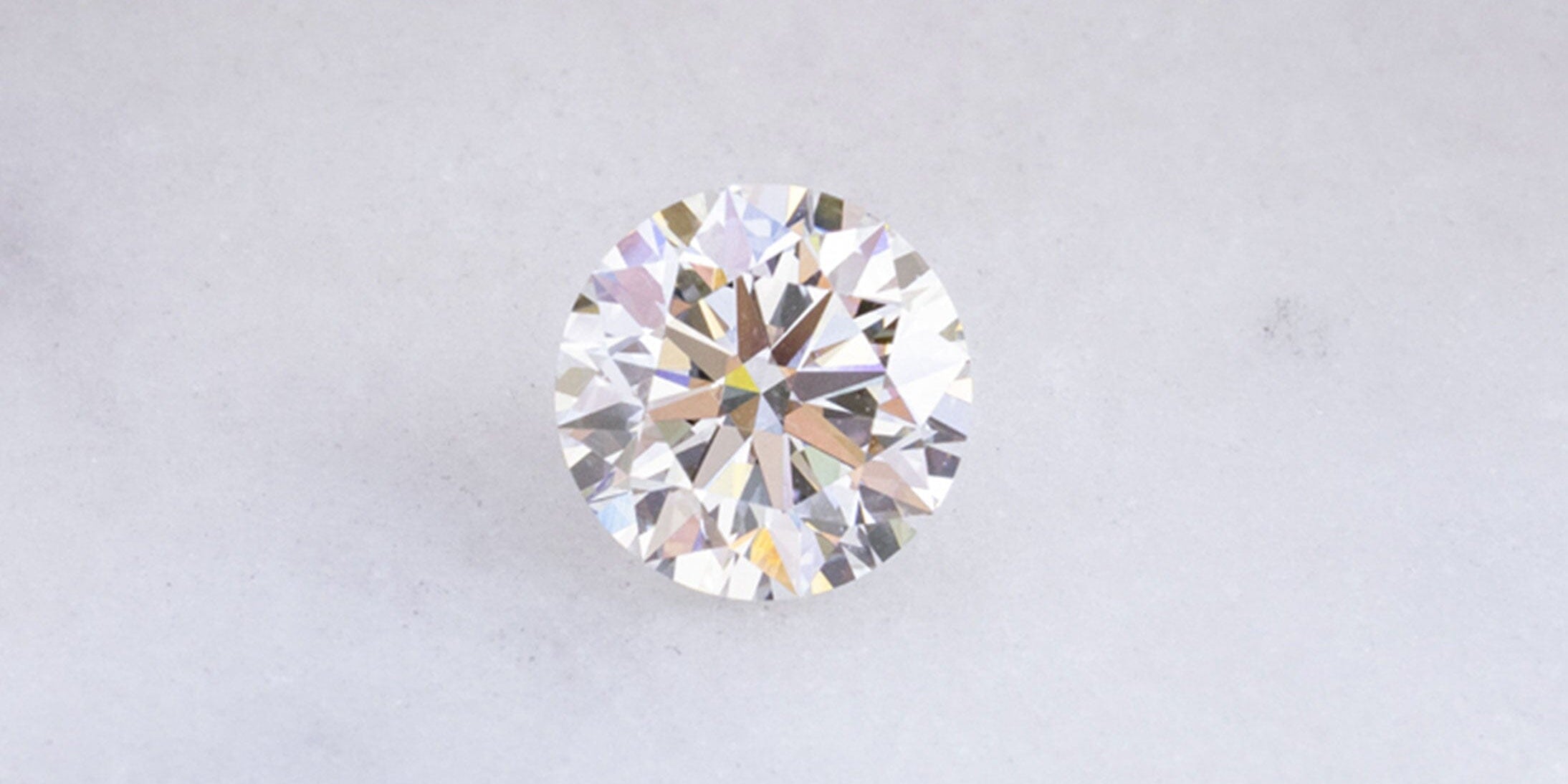Jewelry Vocabulary
Learn the terminology we use to create your perfect engagement ring. The ring terminology displayed below is not exclusive to any one style and in most cases can be incorporated into the ring style you would like to create. If you have any questions about the terminology below chat with us! If you would like to gets started on building your engagement ring please fill out our custom quote form.
Engagement Ring Vocabulary
Prong Styles
- Ball - The prongs are shaped into a sphere shape on top of the center stone. This is the most common style of the prong and will be very smooth.
- Stiletto - The prongs are made into a pointed sharp point over the center stone. These prongs will give you a very sleek modern appearance as well as more security.
- Double - There are two prongs built next to each other to hold your stone. It is typically more secure and commonly used for cushion cut center stones. It can give your ring a more vintage or antique feel. This will be a very secure prong style.
- V-Shape - This prong style is mostly used for princess cut center stone to protect the sharp pointed edges. The prong looks like a "V" cupping each corner. This prong can also be seen at the points of Heart, Marquise, and Pear shape center stones.
- Flat - This is when the prongs are rectangular shaped and will cover the edge of the stone. This is a very secure style of setting and will show more metal.
- Classic - This refers to the style and design of the center prongs. If you took a horizontal cross-section of a prong, the shape would look like a rectangle. This gives the prong a more angular appearance.
- Round - This refers to the style and design of the center prongs. If you took a horizontal cross-section of a prong, the shape would look like a circle. This gives the prong a more tubular appearance.
Crown Styles
- 4-Prong - The prongs are the metal claws that hold your center stone and your side stones as well. Four prongs are typically the minimum necessary for holding your center stone. The Four prongs can be present on a simple crown, halo, or basket setting. The four prongs will show off the center stone the most and will have the least amount of metal around your center stone.
- 6-Prong - Just like the name, a crown with six prongs. This will be more secure for holding your center stone, but will also have more metal holding it.
- Halo - Accent diamonds that surround the center stone. The Halo will add volume to the size and look of the center stone, and also serve as extra protection from chipping.
- 2D Halo - Accent diamonds that surround the center stone and continue to wrap the side of the center stone. The 2D halo will give you extra
- Under Halo - This is a hidden rim of accent diamonds that will typically sit below the girdle of the center stone and is only seen from the profile view, not the top view.
- Diamond Prongs - When diamonds are set into the prongs of the center stone.
- Open - When the prongs hold your center stone and there is now webbing or decoration between each prong. There are open spaces to allow more light into your center stone and make for easier cleaning.
- Web - When there is a u-shaped scoop between each prong. This adds strength to the prongs and another design element.
Body Style
- Cathedral - When the shank of the ring splits from the band and touches a center stone basket, halo, or under halo. This will add more stability and can give your ring
- Traditional - When the shank continually makes a classic "O" ring shape. This will give you a floating center diamond look.
- Single Row Pavé - Pronounced, “Pah-vey,” this style will give you a very minimal look of metal and allow the diamonds to shine as bright as possible. There are different artwork styles of pavé that vary from each jewelry designer. However, they will all feature prongs holding the outer edges of the diamonds creating a seamless row of diamonds. This will require medium to medium-high levels of maintenance depending on the thickness of the pavé ring you choose.
- 3D Pavé - All three sides of the ring’s shank are covered in diamonds. This will give you the look of the least amount of metal for your engagement ring, but will also be the highest maintenance.
- Plain Polish - This is when the band has no stones set into the ring and the metal will have a sleek high polish. This is the lowest maintenance style and will be the easiest to take care of.
- Diamond Eternity - This is how far the diamonds go around the shank of the ring. You can choose the diamonds to go anywhere from 1-100% around the band. The most popular eternity lengths are 50% and 75%. This means that the diamonds go halfway or three-quarters of the way around the band. These are popular lengths because you will be able to re-size your ring later on, and they are aesthetically pleasing. The 100% diamonds eternity means the diamonds go all the way around the band. A plus to the eternity style is that diamonds will always face up no matter what way the band is turned. However, you will be unable to re-size this style ring in the future because there is no bar of metal to subtract or add to.
- Knife Edge - When the surface of a ring forms an edge in the center. The edge can be more rounded like a “U,” shape or more pointed like a “V,” shape depending on your preference. The height of the edge can also vary depending on your preference.
Extra Design Details
- Diamond Bridge - Accent diamonds that will be set on the engagement ring's shank from the profile view.
- Filigree - This is the metal artwork added to an engagement ring design. It can be cut out metal pieces in the gallery of the ring or intricate engraving carved into the band.

